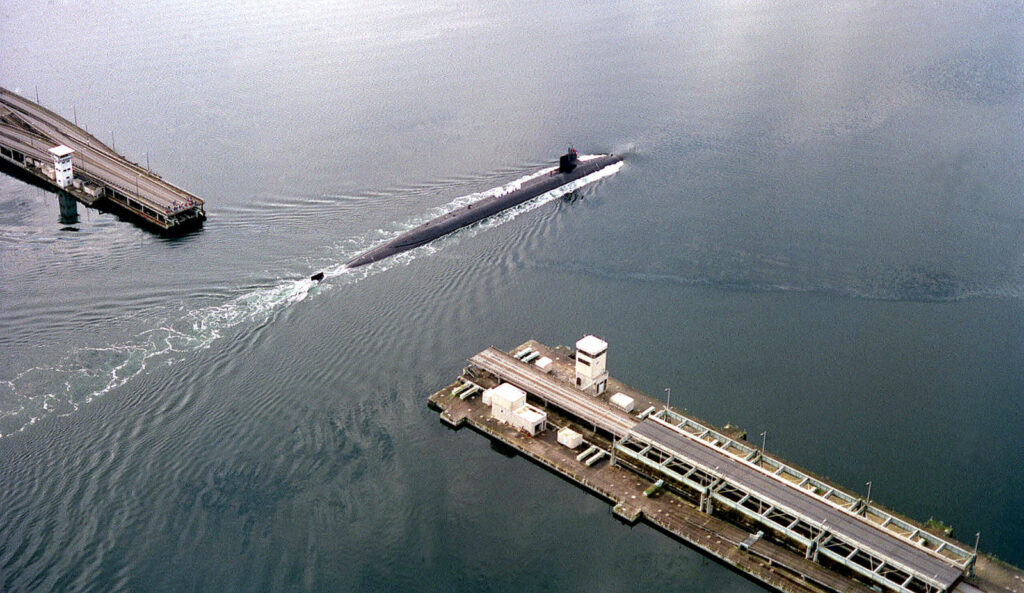At least, that’s what this article says: “Bangor, Washington, now houses the largest single nuclear weapons site in the world … holding roughly 25% of the United States’ 9,962 nuclear warheads.”
Bangor, of course, is the home base of America’s ballistic-missile submarines in the Pacific; a similar base is located at King’s Bay, Georgia, for the Atlantic “boomer” fleet. (Ballistic-missile subs of all nations are called “boomers” because their missile warheads go “boom” at their targets.)
The article is mostly about how the Navy uses dolphins and sea lions with their “extraordinary biological sonar” to detect mines, obstructions, and other “hazards” in harbors and at naval facilities. Read up on that if you like.
Whoever wrote it did sloppy research. The 9,962 figure came from a 2006 article in the Seattle Times (which you can read here); and is very outdated. Since then, the U.S. and Russia have reduced their nuclear weapon stockpiles by mutual agreement (partly because more accurate delivery systems rendered the retired warheads superfluous).
Wikipedia says here, “As of 2020, the United States had a stockpile of 3,750 active and inactive nuclear warheads plus approximately 2,000 warheads retired and awaiting dismantlement.”
A recent KUOW article here, published a few weeks ago, says “Puget Sound is home to around one-third of [America’s] active nukes,” basing its estimate of 720 total warheads on the number of warheads on each missile, and the number of missiles on each submarine. But that doesn’t take into account spares or warheads in storage, or that at any given time dozens are at sea. That article also notes Joint Base Lewis-McChord houses the only airlift unit in the U.S. assigned to transporting nuclear weapons and components, but a 2007 Seattle Post-Intelligencer article (here) said “defense observers don’t think” weapons are stored there.
They certainly are at Bangor, aboard subs in port, even if nowhere else on base.
But Bangor would, in any event, be at the top of any adversary’s target list, and the prevailing southwest winds would blow the fallout 20 miles across Kitsap Peninsula and Puget Sound to Seattle.
So, while Seattle has its charms (at least for some people), it wouldn’t be a great place to be in a nuclear war.
Below: A “boomer” passing through the open Hood Canal bridge
